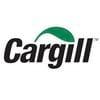Check out what is new in Pig Industry
Find the best technical articles, forums, and videos on Pig Industry at Engormix. Enter now and interact with the world's largest agricultural social network.
1 Introduction Global consumption of pork has increased greatly, making it the second most consumed meat, representing > 34% of global meat consumption (2022 estimates) (1, 42). Studies reveal a 77% growth in pork demand from 1990 to 2022 (2) and with the growing world population and economic growth, the demand is likely to continue growing (2, 3). Consequently, global pig production has grown by about 140% from 1990 to 2021 (42). The USA, Mexico, and Canada ranking among the...
Comments : 0
Recommendations: 0
In the world of animal feed manufacturing, some parameters shout: protein levels, energy values, additive profiles. Others whisper, quietly shaping performance from behind the scenes. Particle size is one of those silent drivers. And yet, for monogastric species like pigs and poultry, it can be the difference between optimal feed conversion and costly inefficiencies. I’ve spent over three decades in feed process technology, and if there’s one...
Comments : 0
Recommendations: 2
1. Introduction African swine fever (ASF) is a devastating hemorrhagic disease of domestic pigs and wild suids caused by a large double-stranded DNA virus, African swine fever virus (ASFV). ASFV is the only member of the Asfarviridae family and only members of the Suidae family are susceptible to ASFV, which has no zoonotic potential [1,2]. Virulent strains of ASFV can kill domestic pigs within about 5–14 days of infection, with a mortality rate approaching 100% [3]....
Comments : 0
Recommendations: 0
1. Introduction Consistent information on animal nutrient requirements and feedstuff characteristics is non-negotiable when proposing precise feeding programs [1]. This information allows nutritionists to determine a given amount of feedstuffs that will provide a diet that will allow production goals to be achieved at an optimized feed cost. Feed formulations can be established using published values of ingredient composition, such as the NRC [2] and Rostagno et al. [3]....
Comments : 0
Recommendations: 0
1. Introduction The swine industry is continually working to improve all aspects of pork production; the development of efficient, yet diagnostically sensitive, disease detection and surveil lance methods is a significant part of this ongoing effort. First described in 2008 for the surveillance of porcine reproductive and respiratory syndrome virus (PRRSV) and porcine circovirus type 2 (PCV2) [1,2], pen-based oral fluids are widely used because of the reduced labor and cost...
Comments : 0
Recommendations: 0
1. Introduction The agricultural sector is currently facing significant challenges, with health considerations, such as increasing pressure due to antibiotic restrictions and the need to ensure the welfare and sustainability of livestock farming, being of paramount importance. Consequently, the implementation of intelligent biosecurity (IB) is non-negotiable since it is clear, as stated by Capper [1], that we will not move towards a better industry if we do not eliminate the diseases...
Comments : 0
Recommendations: 0
Effective sow management is a cornerstone of modern pig production, directly impacting herd productivity and overall farm profitability. Proper care and nutrition of sows not only improve reproductive performance, but also enhance piglet health and survival rates. As swine production becomes more intensive and...
Comments : 0
Recommendations: 1
1. Introduction Weaning is recognized as a highly stressful period for young pigs, during which they experience maternal separation, new social and dietary conditions, and critical physiological changes. These stressors, often compounded by suboptimal sanitary conditions on farms, can lead to severe outbreaks of diarrhea, typically linked to the proliferation of specific pathogens. The most commonly implicated bacterial pathogen is Escherichia coli [1]. However, once dysbiosis and...
Comments : 1
Recommendations: 0
The weaning period is a critical stage in pig farming, marking the transition from maternal milk to solid feed and bringing profound physiological and environmental changes for piglets. This phase significantly impacts piglet growth, immune development, and digestive health, with high susceptibility to...
Comments : 0
Recommendations: 0
1. Introduction Porcine reproductive and respiratory syndrome (PRRS), a globally significant disease of pigs, is caused by the porcine reproductive and respiratory syndrome virus (PRRSV) [1]. Infection of breeding female swine with PRRSV results in reduced animal welfare, poor reproductive performance, and significant economic loss to farmers [2]. To control PRRS, PRRSV entry into breeding herds must be prevented through the application of a comprehensive, science-based plan of...
Comments : 0
Recommendations: 0
The veterinary APIs market is experiencing stability with prices across most categories showing minimal fluctuations and a gradual absorption of channel inventories. Key products like doxycycline, neomycin sulfate, and erythromycin thiocyanate have sustained steady prices attributed to factory maintenance and restricted order policies. However, certain sectors are encountering sustained price pressures due to the gradual introduction of new production capacities. Market activities are...
Comments : 0
Recommendations: 0
1. Introduction to ASF and Current Disease Situation in Asia African swine fever virus (ASFV) genotype II, following its emergence and rapid spread in China in 2018, poses a critical threat due to its high fatality rate in infected pigs (domestic and wild). Since then, outbreaks in 19 countries within this region have been reported to the World Animal Health Information System (WAHIS) as of July 2024 (Figure 1). The social, health, and economic impacts on communities due to ASF...
Comments : 0
Recommendations: 0
1. Introduction Influenza A virus (IAV) infections cause disease in multiple hosts, including humans, poultry and wild birds, but are also an important cause of respiratory tract infections in pigs [1,2]. Most swine IAV (IAVsw) infections are associated with relatively mild clinical signs, but infections can also result in severe disease and increased susceptibility to secondary infections within the porcine respiratory disease complex. Importantly, IAVsw strains pose a public health...
Comments : 0
Recommendations: 0
1. Introduction Contamination of feed ingredients or complete feed has been shown to be a potential route of pathogen transmission [1,2]. To control this potential route of disease transmission, efforts can focus on the prevention of the contamination step from occurring or implementing strategies to reduce the survival of the bacteria or virus in the material, and thus reduce the likelihood of causing clinical disease when presented to a naïve animal. Prevention...
Comments : 0
Recommendations: 0
Dr. John Htoo, Global Senior Expert in Swine Nutrition at Evonik, shared strategic insights on how to support gut health and optimize the performance of weaned pigs through targeted nutritional interventions. His presentation focused on three key levers: nutrients,...
Comments : 0
Recommendations: 0
.jpg&w=3840&q=75)
Faazi Adam (Evonik Animal Nutrition) explains how automation and digitization are revolutionizing farming and feed production and how Evonik helps farmers and feed producers measure and enhance their sustainability performance....
Comments : 0
Recommendations: 0
1. Introduction Dietary levels above 5% of non-starch polysaccharides (NSP) can reduce pig performance due to deleterious effects (such as greater digesta viscosity and lower digestibility) in the gastrointestinal tract of these animals [1]. Corn and soybean meal are the most common ingredients in pig diets but contain 6 to 17% of NSP [2]. Furthermore, higher concentrations of NSP may reduce total tract digestibility while increasing endogenous amino acid loss [3], mucosal cell...
Comments : 0
Recommendations: 0
In low-protein diets, isoleucine often becomes a limiting amino acid due to excessive leucine or free valine. Appropriate isoleucine supplementation promotes protein synthesis, improves feed conversion efficiency, and enhances animal growth performance. Research demonstrates that 28-day-old...
Comments : 0
Recommendations: 0
.jpg&w=3840&q=75)
Faazi Adam from Evonik Animal Nutrition highlights how Evonik is tackling the critical challenges of food security and sustainability. Through innovative, science-backed solutions, Evonik is working to secure reliable food production, enhance agricultural sustainability, and meet the growing demands of a changing world....
Comments : 0
Recommendations: 0
Introduction The Porcine Respiratory Complex (PRC) is one of the most relevant pathologies in intensive pig production; It has a significant impact on the technical, economic and health indicators of farms. Due to its multifactorial nature, involving viral and bacterial pathogens...
Comments : 0
Recommendations: 1
























.jpg&w=3840&q=75)










